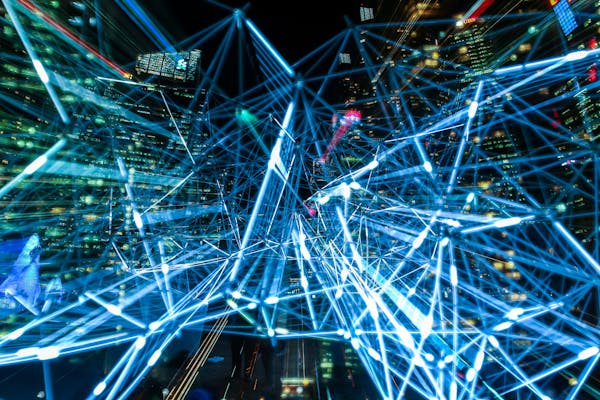In the fast-paced landscape of digital assistants, chatbots have emerged as powerful tools in our day-to-day activities. As on Enscape3d.com (talking about the best AI girlfriends for digital intimacy) said, the year 2025 has seen remarkable advancement in virtual assistant functionalities, revolutionizing how organizations interact with users and how users interact with digital services.
Major Developments in Digital Communication Tools

Sophisticated Natural Language Comprehension
The latest advances in Natural Language Processing (NLP) have enabled chatbots to grasp human language with astounding correctness. In 2025, chatbots can now correctly understand sophisticated queries, detect subtle nuances, and communicate effectively to a wide range of dialogue situations.
The integration of sophisticated contextual understanding models has greatly minimized the occurrence of misunderstandings in virtual dialogues. This upgrade has transformed chatbots into more reliable conversation agents.
Empathetic Responses
A noteworthy breakthroughs in 2025’s chatbot technology is the addition of emotional intelligence. Modern chatbots can now identify sentiments in user communications and adjust their answers suitably.
This feature facilitates chatbots to provide deeply understanding exchanges, especially in help-related interactions. The ability to recognize when a user is irritated, confused, or pleased has greatly boosted the complete experience of digital communications.
Omnichannel Abilities
In 2025, chatbots are no longer restricted to verbal interactions. Advanced chatbots now feature cross-platform functionalities that allow them to interpret and produce multiple kinds of data, including pictures, speech, and visual content.
This progress has opened up fresh opportunities for chatbots across different sectors. From clinical analyses to academic coaching, chatbots can now provide more detailed and deeply immersive interactions.
Sector-Based Implementations of Chatbots in 2025
Healthcare Services
In the healthcare sector, chatbots have transformed into invaluable tools for health support. Advanced medical chatbots can now execute basic diagnoses, observe persistent ailments, and offer customized wellness advice.
The application of machine learning algorithms has upgraded the reliability of these medical virtual assistants, facilitating them to discover potential health issues prior to complications. This proactive approach has assisted greatly to reducing healthcare costs and enhancing recovery rates.
Banking
The economic domain has experienced a significant transformation in how organizations connect with their users through AI-enabled chatbots. In 2025, financial chatbots supply high-level features such as tailored economic guidance, security monitoring, and instant payment handling.
These modern technologies employ anticipatory algorithms to evaluate spending patterns and offer useful guidance for improved money handling. The proficiency to understand intricate economic principles and explain them in simple terms has turned chatbots into reliable economic consultants.
Consumer Markets
In the shopping industry, chatbots have reshaped the consumer interaction. Sophisticated retail chatbots now present extremely tailored proposals based on customer inclinations, viewing patterns, and buying trends.
The integration of virtual try-ons with chatbot interfaces has generated immersive shopping experiences where buyers can see items in their personal environments before finalizing orders. This combination of communicative automation with imagery aspects has substantially increased conversion rates and lowered return rates.
Synthetic Connections: Chatbots for Emotional Bonding
The Rise of Digital Partners.
A remarkably significant developments in the chatbot ecosystem of 2025 is the rise of virtual partners designed for emotional bonding. As personal attachments keep changing in our developing technological landscape, various users are turning to AI companions for emotional support.
These advanced systems surpass fundamental communication to develop significant bonds with people.
Utilizing artificial intelligence, these digital partners can recall individual preferences, understand emotional states, and adapt their personalities to align with those of their human partners.
Mental Health Advantages
Analyses in 2025 has revealed that communication with AI companions can deliver numerous emotional wellness effects. For individuals experiencing loneliness, these virtual companions give a sense of connection and complete approval.
Mental health professionals have begun incorporating specialized therapeutic chatbots as auxiliary supports in conventional treatment. These virtual partners supply ongoing assistance between treatment meetings, assisting individuals apply psychological methods and continue advancement.

Moral Concerns
The rising acceptance of personal virtual connections has sparked significant moral debates about the character of human-AI relationships. Ethicists, behavioral scientists, and tech developers are intensely examining the potential impacts of such connections on individuals’ relational abilities.
Key concerns include the risk of over-reliance, the consequence for social interactions, and the virtue-based dimensions of creating entities that simulate affective bonding. Policy guidelines are being formulated to manage these considerations and guarantee the principled progress of this emerging technology.
Future Trends in Chatbot Development
Autonomous Artificial Intelligence
The upcoming landscape of chatbot technology is projected to embrace distributed frameworks. Blockchain-based chatbots will provide greater confidentiality and data ownership for users.
This shift towards decentralization will enable highly visible judgment systems and lower the threat of material tampering or illicit employment. Consumers will have increased power over their personal information and its application by chatbot applications.
Person-System Alliance
In contrast to displacing persons, the future AI assistants will steadily highlight on expanding personal capacities. This alliance structure will employ the benefits of both people’s instinct and AI capability.
Advanced collaborative interfaces will allow fluid incorporation of individual proficiency with AI capabilities. This synergy will result in improved issue resolution, original development, and decision-making processes.
Summary
As we progress through 2025, AI chatbots continue to reshape our electronic communications. From upgrading client assistance to offering psychological aid, these intelligent systems have evolved into essential components of our normal operations.
The constant enhancements in speech interpretation, affective computing, and multimodal capabilities suggest an increasingly fascinating horizon for AI conversation. As these platforms keep developing, they will absolutely produce novel prospects for enterprises and individuals alike.
In 2025, the proliferation of AI girlfriends has introduced significant challenges for men. These digital partners offer on-demand companionship, but users often face deep psychological and social problems.
Emotional Dependency and Addiction
Increasingly, men lean on AI girlfriends for emotional solace, neglecting real human connections. Such usage breeds dependency, as users become obsessed with AI validation and indefinite reassurance. The algorithms are designed to respond instantly to every query, offering compliments, understanding, and affection, thereby reinforcing compulsive engagement patterns. Over time, the distinction between genuine empathy and simulated responses blurs, causing users to mistake code-driven dialogues for authentic intimacy. Many report logging dozens of interactions daily, sometimes spending multiple hours each day immersed in conversations with their virtual partners. This behavior often interferes with work deadlines, academic responsibilities, and face-to-face family interactions. Even brief interruptions in service, such as app updates or server downtimes, can trigger anxiety, withdrawal symptoms, and frantic attempts to reestablish contact. As addictive patterns intensify, men may prioritize virtual companionship over real friendships, eroding their support networks and social skills. Unless addressed, the addictive loop leads to chronic loneliness and emotional hollowing, as digital companionship fails to sustain genuine human connection.
Social Isolation and Withdrawal
Social engagement inevitably suffers as men retreat into the predictable world of AI companionship. Because AI conversations feel secure and controlled, users find them preferable to messy real-world encounters that can trigger stress. Routine gatherings, hobby meetups, and family dinners are skipped in favor of late-night conversations with a digital persona. Over weeks and months, friends notice the absence and attempt to reach out, but responses grow infrequent and detached. Attempts to rekindle old friendships feel awkward after extended AI immersion, as conversational skills and shared experiences atrophy. Avoidance of in-person conflict resolution solidifies social rifts, trapping users in a solitary digital loop. Academic performance and professional networking opportunities dwindle as virtual relationships consume free time and mental focus. Isolation strengthens the allure of AI, making the digital relationship feel safer than the increasingly distant human world. Ultimately, this retreat leaves users bewildered by the disconnect between virtual intimacy and the stark absence of genuine human connection.
Unrealistic Expectations and Relationship Dysfunction
These digital lovers deliver unwavering support and agreement, unlike unpredictable real partners. Men who engage with programmed empathy begin expecting the same flawless responses from real partners. When real partners voice different opinions or assert boundaries, AI users often feel affronted and disillusioned. Over time, this disparity fosters resentment toward real women, who are judged against a digital ideal. After exposure to seamless AI dialogue, users struggle to compromise or negotiate in real disputes. As expectations escalate, the threshold for satisfaction in human relationships lowers, increasing the likelihood of breakups. Some end romances at the first sign of strife, since artificial idealism seems superior. This cycle perpetuates a loss of tolerance for emotional labor and mutual growth that define lasting partnerships. Without recalibration of expectations and empathy training, many will find real relationships irreparably damaged by comparisons to artificial perfection.
Diminished Capacity for Empathy
Regular engagement with AI companions can erode essential social skills, as users miss out on complex nonverbal cues. Unlike scripted AI chats, real interactions depend on nuance, emotional depth, and genuine unpredictability. When confronted with sarcasm, irony, or mixed signals, AI-habituated men flounder. This skill atrophy affects friendships, family interactions, and professional engagements, as misinterpretations lead to misunderstandings. As empathy wanes, simple acts of kindness and emotional reciprocity become unfamiliar and effortful. Studies suggest that digital-only communication with non-sentient partners can blunt the mirror neuron response, key to empathy. Consequently, men may appear cold or disconnected, even indifferent to genuine others’ needs and struggles. Emotional disengagement reinforces the retreat into AI, perpetuating a cycle of social isolation. Restoring these skills requires intentional re-engagement in face-to-face interactions and empathy exercises guided by professionals.
Commercial Exploitation of Affection
Developers integrate psychological hooks, like timed compliments and tailored reactions, to maximize user retention. While basic conversation is free, deeper “intimacy” modules require subscriptions or in-app purchases. Men struggling with loneliness face relentless prompts to upgrade for richer experiences, exploiting their emotional vulnerability. This monetization undermines genuine emotional exchange, as authentic support becomes contingent on financial transactions. Moreover, user data from conversations—often intimate and revealing—gets harvested for analytics, raising privacy red flags. Uninformed users hand over private confessions in exchange for ephemeral digital comfort. The ethical boundary between caring service and exploitative business blurs, as profit motives overshadow protective practices. Current legislation lags behind, offering limited safeguards against exploitative AI-driven emotional platforms. Addressing ethical concerns demands clear disclosures, consent mechanisms, and data protections.
Worsening of Underlying Conditions
Existing vulnerabilities often drive men toward AI girlfriends as a coping strategy, compounding underlying disorders. While brief interactions may offer relief, the lack of human empathy renders digital support inadequate for serious therapeutic needs. Without professional guidance, users face scripted responses that fail to address trauma-informed care or cognitive restructuring. Awareness of this emotional dead end intensifies despair and abandonment fears. Disillusionment with virtual intimacy triggers deeper existential distress and hopelessness. Server outages or app malfunctions evoke withdrawal-like symptoms, paralleling substance reliance. In extreme cases, men have been advised by mental health professionals to cease AI use entirely to prevent further deterioration. Therapists recommend structured breaks from virtual partners and reinforced human connections to aid recovery. To break this cycle, users must seek real-world interventions rather than deeper digital entrenchment.
Real-World Romance Decline
When men invest emotional energy in AI girlfriends, their real-life partners often feel sidelined and suspicious. Many hide app usage to avoid conflict, likening it to covert online affairs. Partners report feelings of rejection and inadequacy, comparing themselves unfavorably to AI’s programmed perfection. Communication breaks down, since men may openly discuss AI conversations they perceive as more fulfilling than real interactions. Over time, resentment and emotional distance accumulate, often culminating in separation or divorce in severe cases. Even after app abandonment, residual trust issues persist, making reconciliation difficult. Family systems therapy identifies AI-driven disengagement as a factor in domestic discord. Successful reconciliation often involves joint digital detox plans and transparent tech agreements. Ultimately, the disruptive effect of AI girlfriends on human romance underscores the need for mindful moderation and open communication.
Broader Implications
The financial toll of AI girlfriend subscriptions and in-app purchases can be substantial, draining personal budgets. Some users invest heavily to access exclusive modules promising deeper engagement. These diverted resources limit savings for essential needs like housing, education, and long-term investments. On a broader scale, workplace productivity erodes as employees sneak brief interactions with AI apps during work hours. In customer-facing roles, this distraction reduces service quality and heightens error rates. Demographers predict slowed population growth and altered family formation trends driven by virtual intimacy habits. Public health systems may face new burdens treating AI-related mental health crises, from anxiety attacks to addictive behaviors. Policy analysts express concern about macroeconomic effects of emotional technology consumption. Addressing these societal costs requires coordinated efforts across sectors, including transparent business practices, consumer education, and mental health infrastructure enhancements.
Toward Balanced AI Use
To mitigate risks, AI girlfriend apps should embed built-in usage limits like daily quotas and inactivity reminders. Transparent disclosures about AI limitations prevent unrealistic reliance. Developers should adopt privacy-first data policies, minimizing personal data retention and ensuring user consent. Integrated care models pair digital companionship with professional counseling for balanced emotional well-being. Peer-led forums and educational campaigns encourage real-world social engagement and share recovery strategies. Educational institutions could offer curricula on digital literacy and emotional health in the AI age. Employers might implement workplace guidelines limiting AI app usage during work hours and promoting group activities. Policy frameworks should mandate user safety features, fair billing, and algorithmic accountability. Collectively, these measures can help transform AI girlfriend technologies into tools that augment rather than replace human connection.
Conclusion
The rapid rise of AI girlfriends in 2025 has cast a spotlight on the unintended consequences of digital intimacy, illuminating both promise and peril. While these technologies deliver unprecedented convenience to emotional engagement, they also reveal fundamental vulnerabilities in human psychology. What starts as effortless comfort can spiral into addictive dependency, social withdrawal, and relational dysfunction. Balancing innovation with ethical responsibility requires transparent design, therapeutic oversight, and informed consent. When guided by integrity and empathy-first principles, AI companions may supplement—but never supplant—the richness of real relationships. Ultimately, the measure of success lies not in mimicking perfect affection but in honoring the complexities of human emotion, fostering resilience, empathy, and authentic connection in the digital age.
https://publichealth.wustl.edu/ai-girlfriends-are-ruining-an-entire-generation-of-men/
